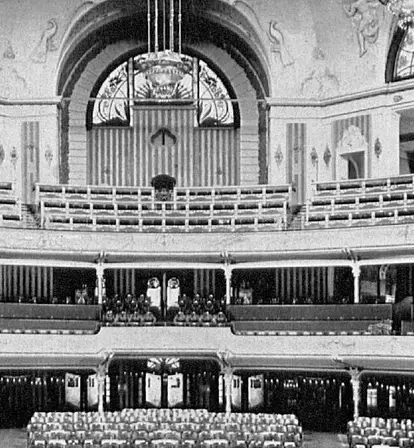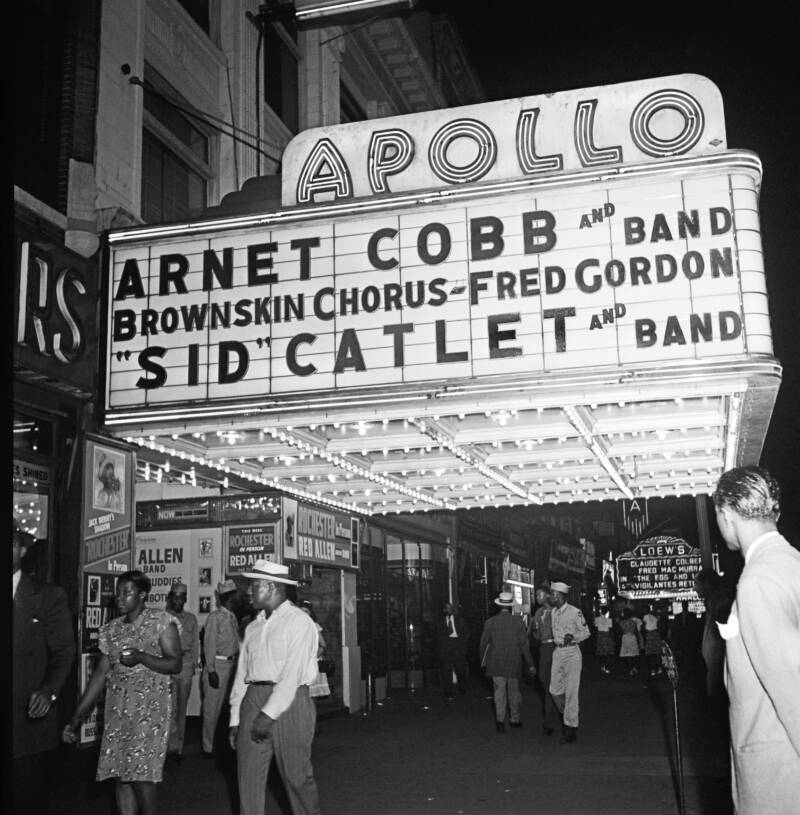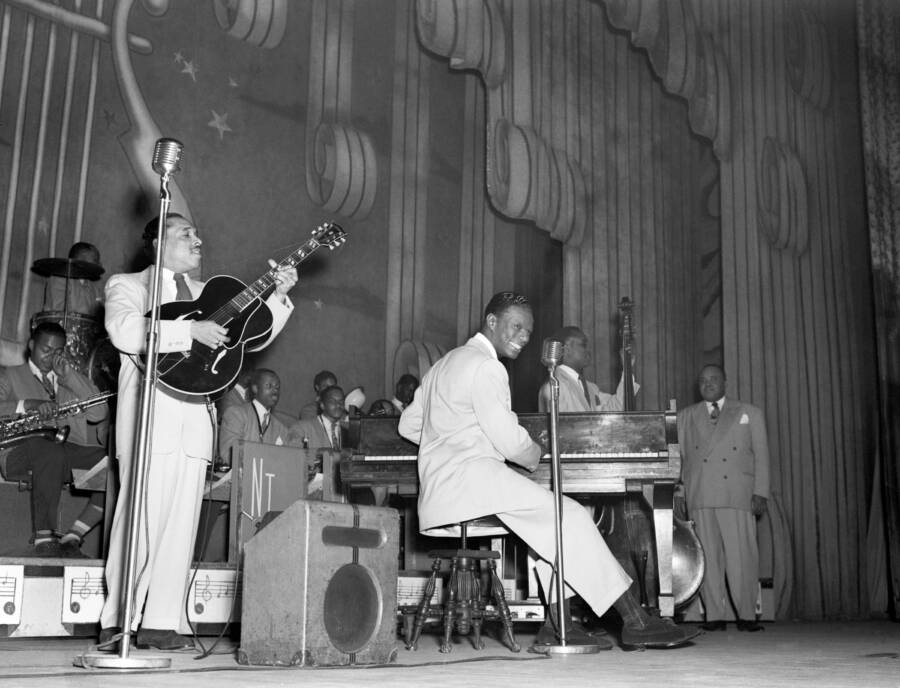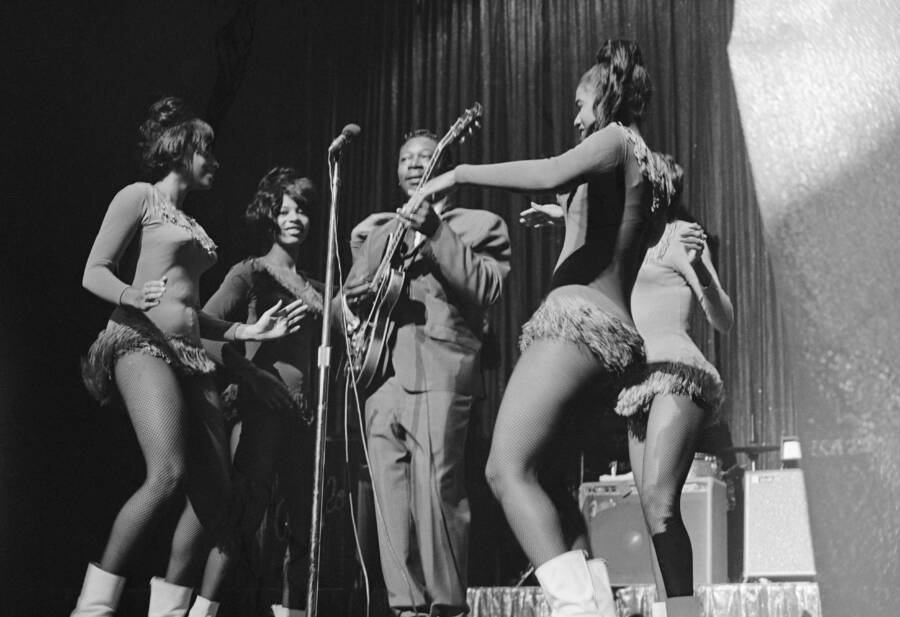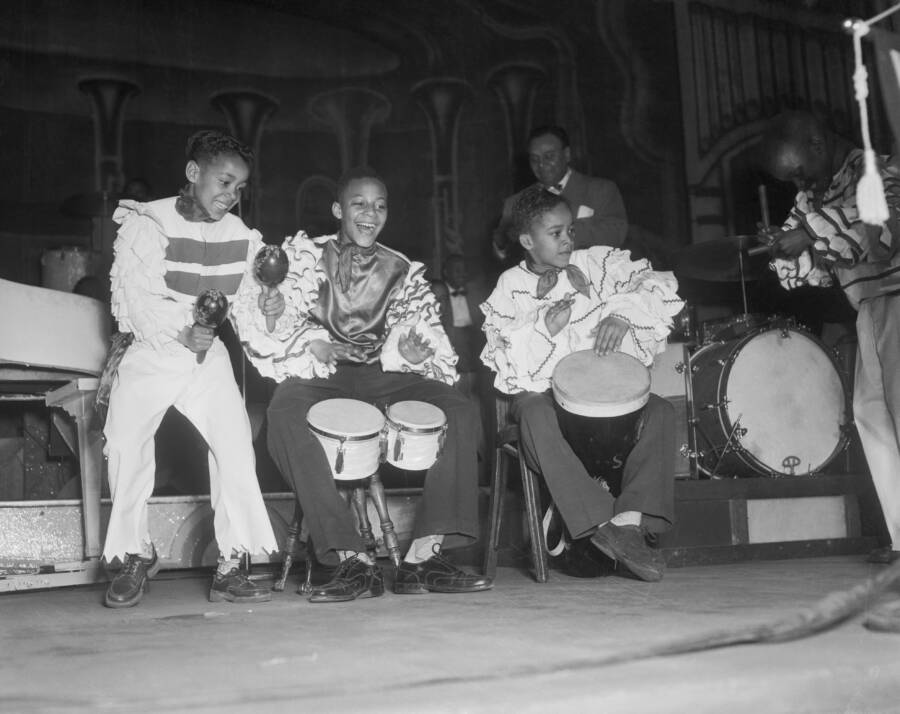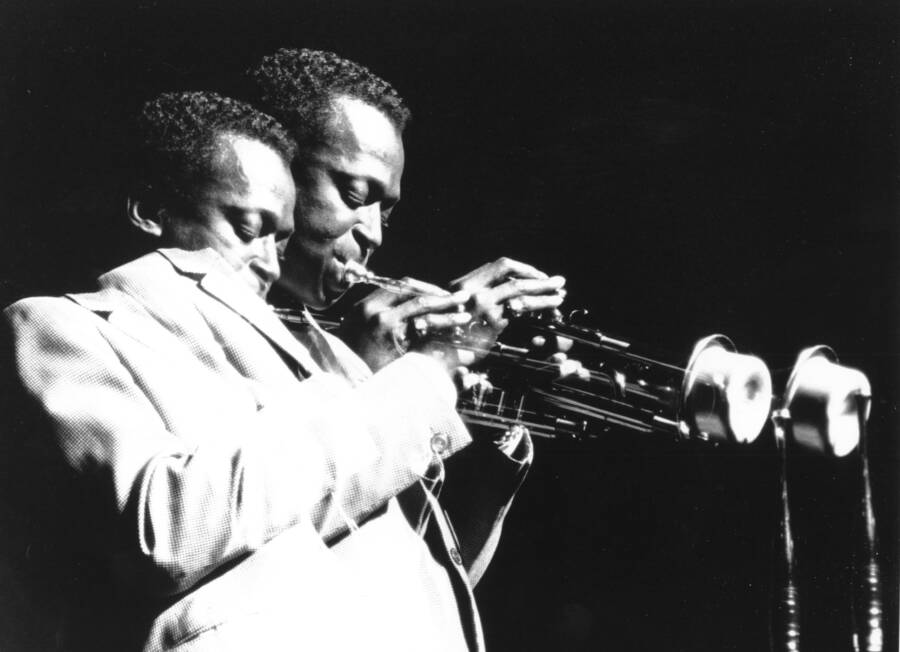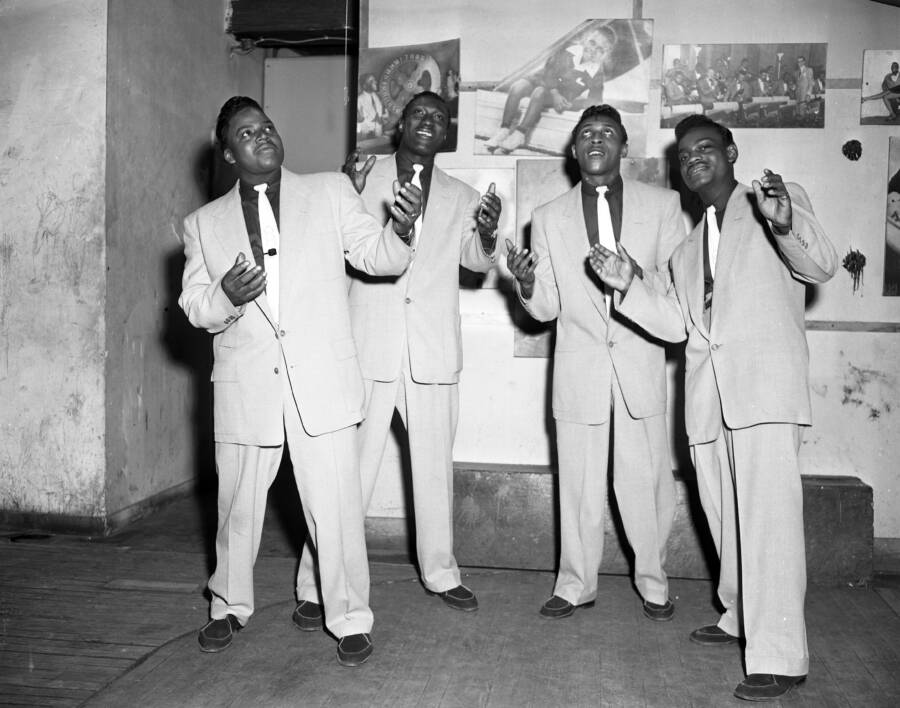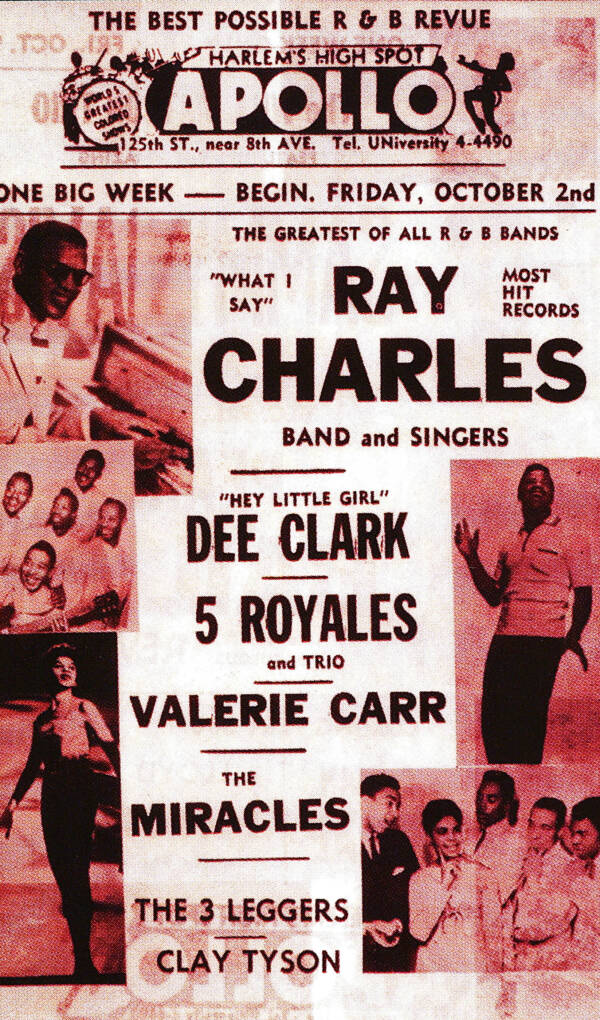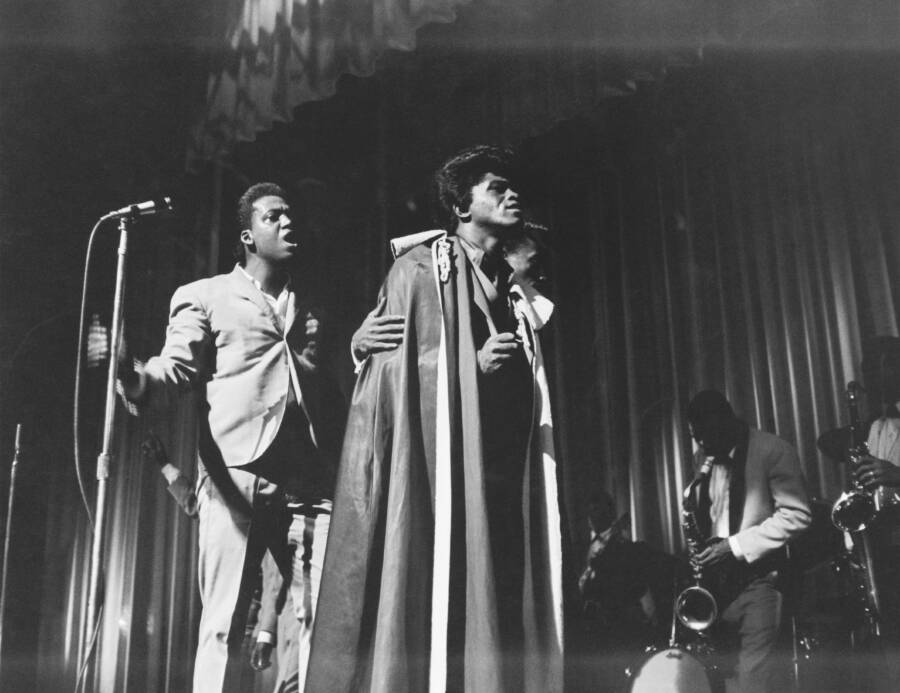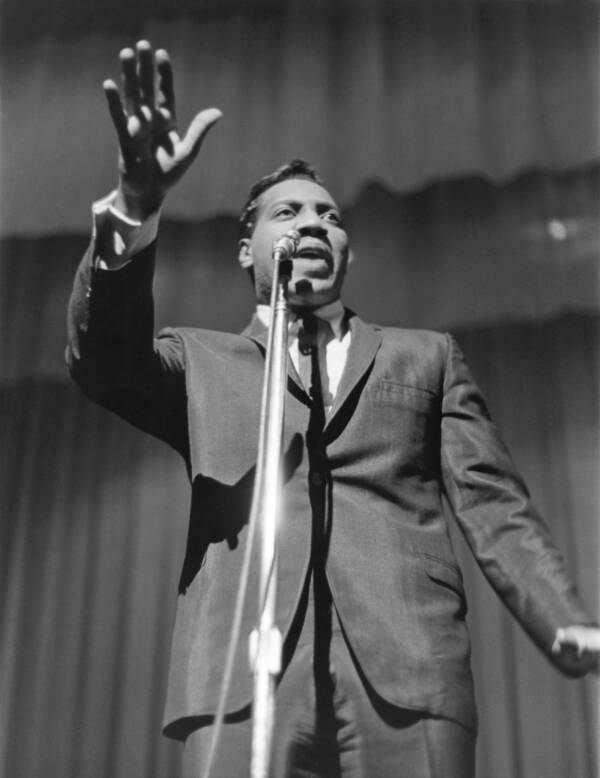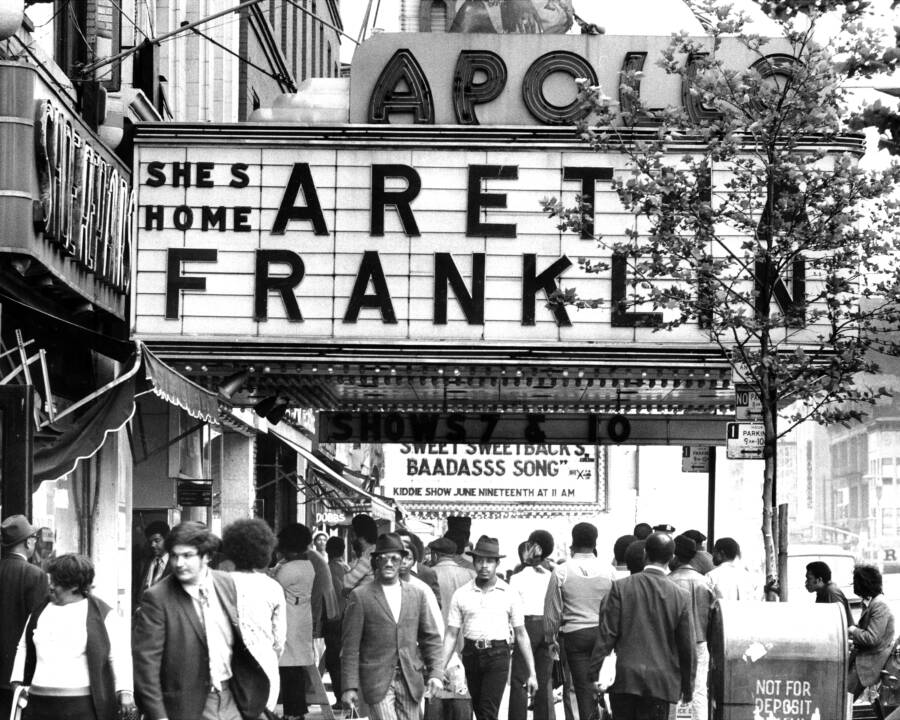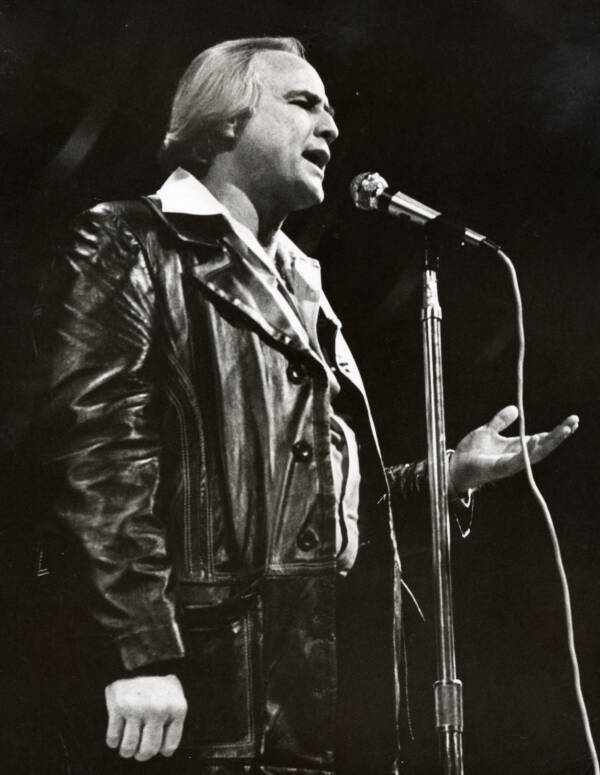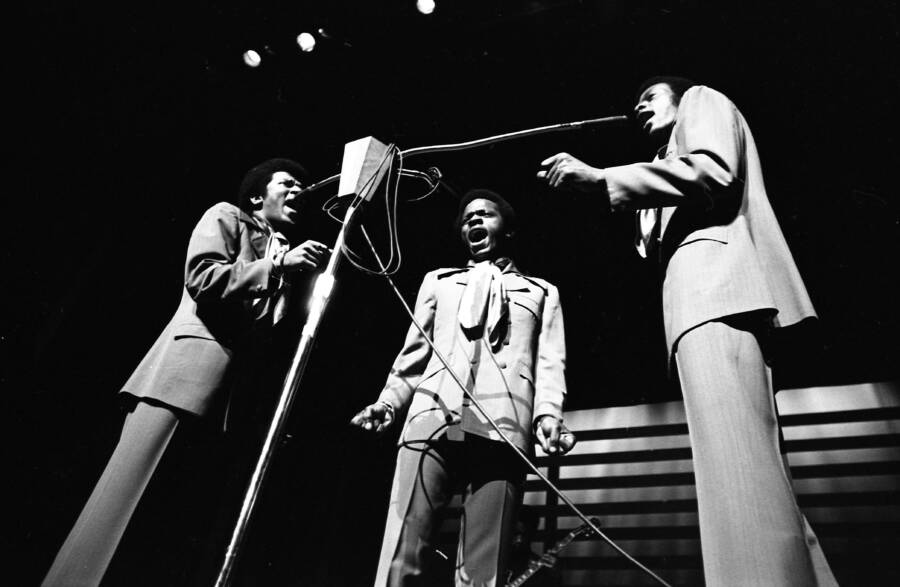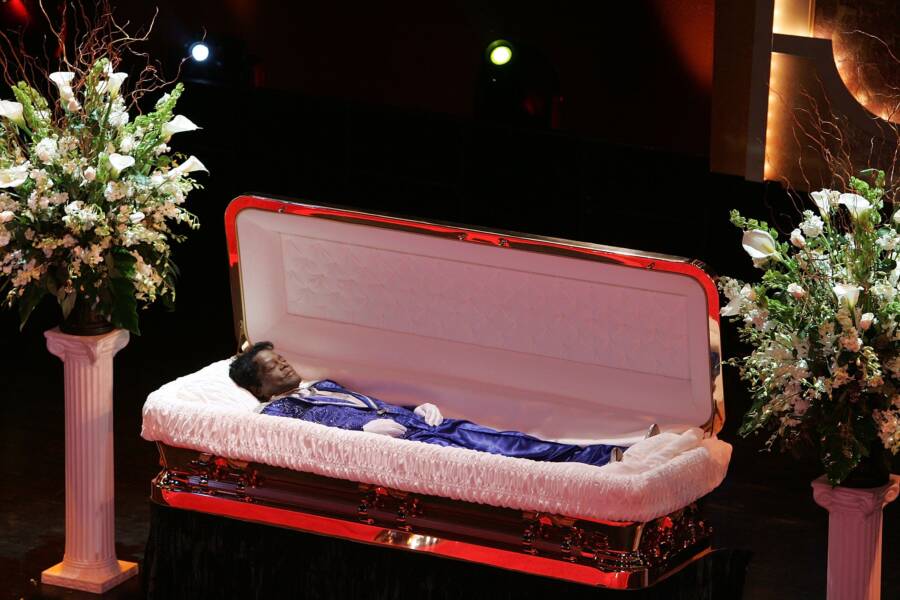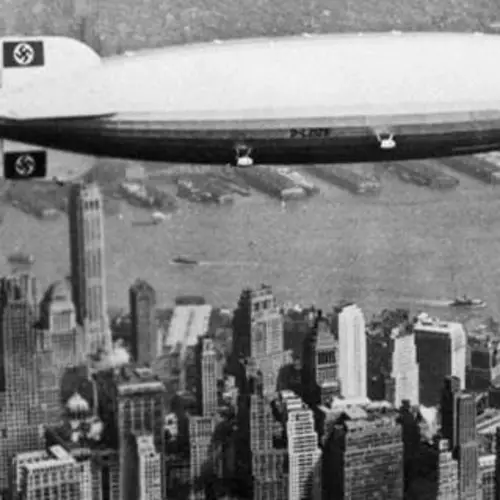For more than a century, Harlem's legendary Apollo Theater has launched the careers of black performers from James Brown to Michael Jackson.
When James Brown, "The Godfather of Soul," died his body was driven to Harlem's Apollo Theater. He was touted in a white carriage pulled by two equally white horses and his body was entombed in a casket lined with white satin.
When he was propped up on the Apollo Theater's red-carpeted stage, thousands queued up to say their final goodbyes. Among those masses were A Tribe Called Quest's co-founder Phife Dawg, Kanye West, KRS-One, Dave Chapelle, Chuck D, and Grandmaster Flash.
As acknowledged by Vanity Fair, James Brown's 1962 album James Brown Live at the Apollo shot the theater's name-brand recognition into the stratosphere. Director Lee Daniels recalled every black household he knew owned a copy — "along with the Bible."
Indeed, the Apollo Theater played a colossal role for Black America throughout the 1960s and 1970s. Its '80s variety show ran for 20 years. The theater undoubtedly served as a haven and cultural space for African Americans living in a racially divided country. This year, it will turn 106.
The Birth Of The Apollo Theater
When the Apollo opened its doors in 1913, according to the theater's website, it was originally designed by George Keister. The famed architect was already renowned for his work on the Astor Theatre, Belasco Theatre, and the Bronx Opera House.
In its early days, the neo-classic venue primarily featured burlesque when producers Benjamin Hurtig and Harry Seamon secured a 30-year lease on the property in 1914. According to the BBC, it would take nearly 20 years for someone to buy and own the property.
That purchase came from theater impresario Sidney S. Cohen in 1933. From then on, the venue's identity evolved. Formerly known as Hurting and Seamon's New Burlesque Theater, the venue — which had been restricted exclusively to white patrons — fell into disrepair when New York's mayor Fiorello La Guardia banned burlesque in 1932.
Cohen, inspired by the Greek God of music, took on the lease and named the building the 125th Street Apollo Theatre.

Herbert Gehr/The LIFE Picture Collection/Getty ImagesPerformers try to win the audience over at Amateur Night at The Apollo in 1944.
It would take another half-century for the Apollo to amass enough historical credit to garner the city and state's landmark status. The sheer amount of talent that graced the theater's stage during those decades, however, has arguably never been equaled elsewhere.
It all began with Cohen's new direction of actively including Harlem's growing African American community in the patronage and programming of the venue. He and his manager, Morris Sussman, primarily shifted from burlesque to variety revues and welcomed black people equally.
Only two years later, Frank Schiffman and Leo Brecher took over. They operated the venue until the late 1970s.
The mid-1930s saw the Harlem Renaissance, a period of explosive success in the arts for African American communities, come to a close. The period was rooted in an early iteration of the mid-20th century's Civil Rights movement and it laid fertile ground for New York's black community to carve out a bountiful creative space for itself.
This was done in large part via the Apollo.
According to Sandra L. West and historian Aberjhani's Encyclopedia Of The Harlem Renaissance, the Harlem Riot of 1935 dramatically reduced the number of white visitors to the theater and Schiffman and Brecher's business was already the only major theater to hire black people. The Apollo thus became the epicenter of arts for the black community in New York.
The 1940s And '50s On 125th
Another major riot in 1943 only further reduced the number of whites making their way to the Apollo. By this point, the theater's eclectic output ranged from stand-up comedy and tap-dancing performances to jazz and blues shows, to movie screenings and play productions.
Though some critics argued that the theater was stuck in the era of vaudeville as some performers still used blackface or were egregiously sexual onstage, the Apollo only continued to draw audiences.
This growth spurt was in part fueled by Schiffman's campaign to integrate the theater into its surrounding community. The theater thus held fundraisers for the National Association for the Advancement of Colored People (NAACP) and the National Urban League.
The rise of swing in the 1940s was arguably boosted extensively by the Apollo's decision to broadcast these types of performances on the radio. From Duke Ellington to Count Basie, this created a fervor for swing only comparable to the jazz craze which had dominated the U.S. decades before.
Popularizing swing resulted in the same talent becoming all the more employable at venues across the country. Following this phase was the rise of bebop music, spearheaded by the likes of Dizzy Gillespie and Charlie Parker.
Unfortunately, with the influx of a wider patronage and the resultant flow of cash came an interest from the seedier parts of New York. While the mob took over the nearby Cotton Club, it had left the Apollo alone — but Schiffman and his sons did have to pay gangsters a regular fee.
Nonetheless, the Apollo Theater had firmly established itself as a litmus test for performers to know if they were worth their salt. It became glaringly apparent that anyone who could satisfy an audience at the Apollo could make it anywhere.
Conversely, those who had already become national successes were tested to see if they truly had what it took — or had simply been riding the coattails of success this whole time. Josephine Baker, for instance, was already a household name by the time she performed at the Apollo in the 1950s.
The Apollo, however, allowed her to cement that legendary status.
The Motown Revue At The Apollo
There has never been a more frequent headliner at the Apollo than James Brown. Rolling Stone credited his 1963 album recorded at the theater for establishing him as "an R&B superstar and a sales force to be reckoned with."
The Apollo had become a beacon for any and all rising stars, from the Jackson Five and the Four Tops to the Bluebelles, Gladys Knight and the Pips, and Stevie Wonder. Michael Jackson and his brothers won an Amateur Night contest there in 1967 after traveling all the way from Gary, Indiana.
Instead of celebrating with his siblings, Jackson waited in the wings and marveled at those on stage; James Brown and Jackie Wilson. It was this kind of environment, and the talent it amassed, that allowed someone like Jackson to study, obsess, focus, and refine his talents.
"Michael watched each and every act until it was time for him to go on," said the legendary Smokey Robinson. "Then, after his shows, he'd go back and watch again."
It wasn't just the King of Pop who started his career at the Apollo, however. The list is staggering and seemingly endless: Billie Holiday, Sammy Davis Jr., Diana Ross, The Supremes, Parliament-Funkadelic, Patti LaBelle, Marvin Gaye, Luther Vandross, The Isley Brothers, Aretha Franklin, and more.
"The Apollo is a sanctuary for black music, a place where a lot of magical moments happened. The evolution of black music over the last 50, 60, 70 years has just been amazing. Rhythm and blues and soul and gospel has just been such a strong force. Not only for black culture but American culture and global culture and a lot of it started, and was centered on, the Apollo. Even if the music was being made in Mississippi or Alabama or Detroit...they would all come to the Apollo." — Pharrell Williams
The late 1960s and early 1970s, however, saw the Apollo's status as the go-to for black entertainment begin to wane. With an increase in integration came a decline of the theater's primary audience. Those who started there would return for a show or two out of a sense of loyalty, but things were never the same.
To combat this unnerving fluctuation, the Apollo began screening more movies. It was the 1970s and exploitation cinema was at the forefront of urban centers like New York City. Tragically, the theater simply failed to make ends meet — and Schiffman closed it in January 1976.
The Apollo Ever After
After a brief reopening in 1978 that lasted only a year, the Apollo remained dormant until 1981 when lawyer, politician, and media executive Percy Sutton purchased the theater and made it a full-fledged recording and television studio.
The theater received city and state landmark status two years later and soon produced the world-famous television program, Showtime at the Apollo which aired until 2008.
The Apollo Theater Foundation, Inc. was established in 1991 and continues to serve as a non-profit organization to this day. James Brown's open casket lay on stage after his death in 2006, while then-Senator Barack Obama hosted a fundraiser for his presidential campaign a year later.
Though the Apollo remains a fully-functioning venue to this day, the theater was one of the most important, supportive, and creatively fertile grounds for American artists in the 20th century.
After learning about the birth and history of Harlem's legendary Apollo Theater, read about the Harlem Hellfighters — the overlooked African-American heroes of World War I. Then, take an amazing photographic tour of New York in the 1920s.
